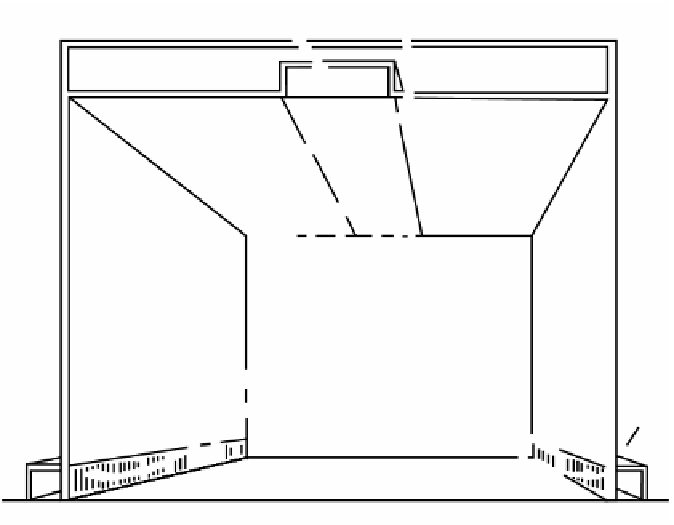Environmental Engineering Reference
In-Depth Information
Figure 12.16
Laminar air flow in a clean room.
inadequately sealed ductwork or filter gaskets. Leakage is outward when
the filter is on the discharge side. Placing HEPA filters in the last position
before the ductwork ensures that unfiltered air will not enter the room. It is
critically important to install HEPA filters so that leakage does not occur
around them. Achieving an absolutely airtight seal is, however, very difficult.
Pressurization is used to assure that air entering the room is filtered.
It is facilitated by air locks which are used by employees for room entry
and egress.
Many modern clean rooms have very high cleanliness requirements. As
a consequence, HEPA filters with DOP efficiencies on the order of 99.995%
or higher are commonly used.
In addition to HEPA filters, laminar flows, and high recirculation rates,
clean room users employ a variety of practices to limit particle generation,
resuspension, and deposition. These include the use of clothing that covers
particle-generating parts of the body and produces few particles itself. It also
includes the use of low particle-generating equipment and materials.
II. Gas and vapor-phase contaminants
Application of air cleaning for removal or control of gas/vapor-phase con-
taminants is, in most cases, a much more difficult undertaking than it is for
airborne particles. This is due in part to the fact that the many substances










